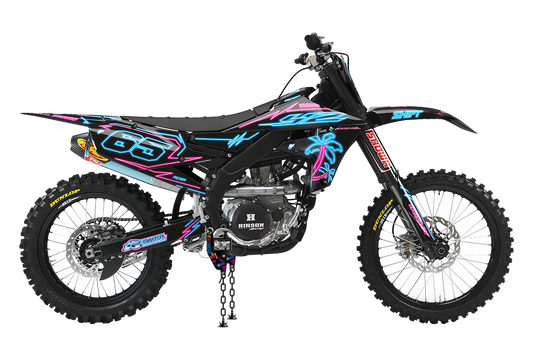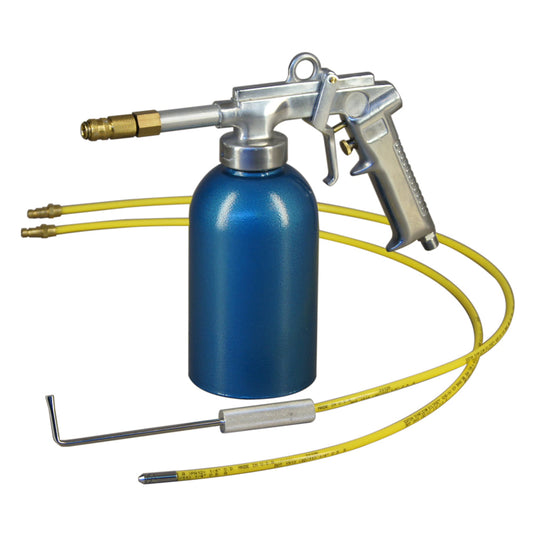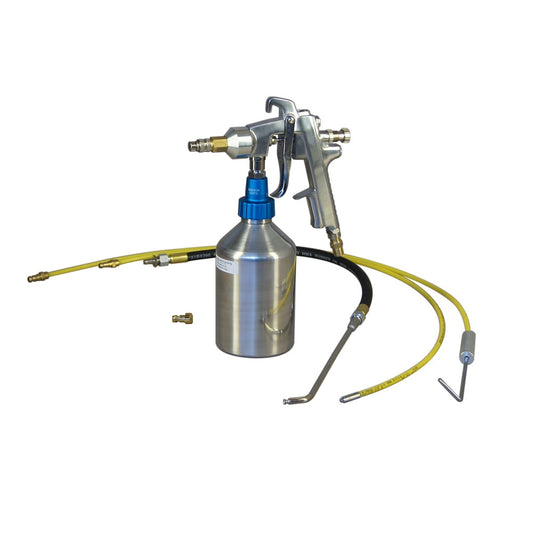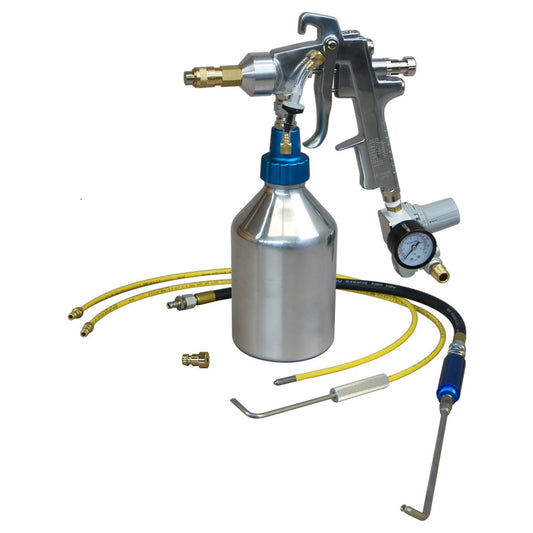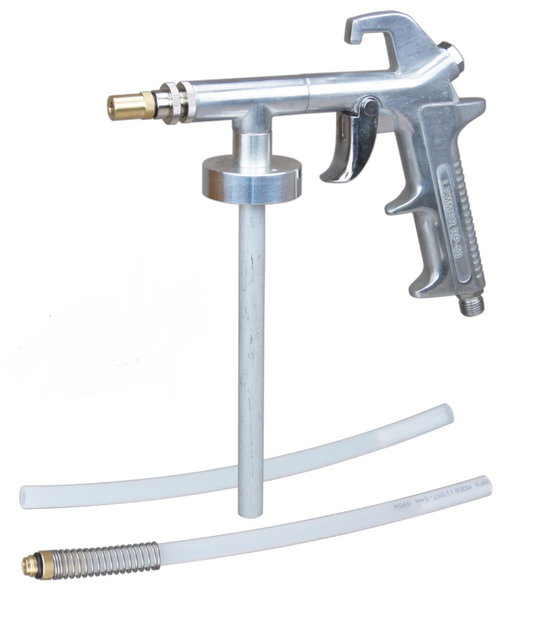
Rustproofing - All you need to know and more! Pt 1
Many people don't really think about car rustproofing or undercoating until it's too late. With the price of new vehicles these days, that's a luxury that fewer and fewer people can afford to take. In this 2-part post we'll not only show you everything you wanted to know about rustproofing, but also how it pays you back, in spades. With many millions of tons of road salt and brines applied to Canadian and US roads each year, rust will get your vehicle sooner or later, unless you take effective steps to avoid it. Rust protection is one of the few things you can do to your vehicle which actually pays you back in real $$$ value- AND it pays you back in multiples of what you spend! (more on that in pt 2)
For those that are learning, or looking to add to their knowledge base on this subject, hopefully this 2 part article can help you pick the best rust proofing product and strategy. There's a lot to chat about. In this first part, we'll discuss various long life and dealer installed products, as well as some other factors. In the 2nd part, we'll discuss well known annual and home brew type products, as well as how rustproofing greatly improves value in your vehicle...
- Overview
- Why does my car rust?
- Factory undercoating
- Where should the vehicle be rustproofed?
- When should my vehicle be rustproofed?
- Steel vs aluminum
- Electric and hybrid cars
- Dealer installed undercoating and Electronic Rust Protection
- Rubberized or Asphalt rustproofing
- Long life products
- Ceramic coats(Feynlab)
- Non-petroleum based
- Drilling Holes
- Preparation of the Vehicle
- Paint protection Film, Ceramic coatings and other exterior solutions
Overview
Every year, millions of tons of salt and brine are spread on the roads in North America during the winters. Also, for people that live near the coast of salty oceans, rust is an ongoing concern.
Reading thru some blogs on the net, there is a lot of mis-info out there, such as one writer claiming that factory galvanizing only started being offered after 2006, which simply isn't true, as many manufacturers have been offering galvanized body panels since the 80's. Still other writers are providing misinfo about the various products and the types of products that dealers install. Still others are offering bad info about rustproofing on new cars. I intend to rectify that here.
Undercoating vs Rustproofing- Some folks feel that there is a difference, and perhaps to a degree, there is. Undercoating is often described as thick heavy products that are applied only to the vehicle's underbody, which don't need annual re-applications. While rustproofing is often described as lighter products that are applied and re-applied to the body and chassis on a regular basis.
I tend to use the term rustproofing for all purposes.
Why does my my car rust?
If you've ever had to do expensive rust repair on your car, or had to scrap one that was rusted out completely, you know that rust goes with cars like mud on a pig. The rust process is a simple chemical reaction between iron and oxygen, which happens to get sped up a lot when salt is added to the equation..
Oddly, your car doesn't do it's rusting in the cold winters(mostly). It does it in the spring when temperatures are warming up and there's lots of condensation plus salt residue still on the car from the winter. The warmer temps really speed up the chemical reaction process. If you live near the ocean, you have to deal with this problem year round.
Keeping your whole car clean with 1 simple product
Factory installed
In addition to galvanizing special primers, some vehicles have come with undercoating pre-installed at the factory. VW is one example. In the 1950's and 60's some cars from Detroit came with a factory installed tar based (or tar-like) product. This served as sound deadening and some rustproofing.The downside is that the product tended to eventually dry out and crack, letting saltwater get in behind it, causing rust.
Ford started offering gravel guard on parts of their vehicles in the 70's and possibly into the 80's. In VW's case it was a polymer product(or something like that), similar to gravel guard, which was applied to the whole underbody, during the mark 3 and possibly Mark 4 eras(90's to 2000's). Toyota also applies a gravel guard product to portions of the underbodies on their cars.
GM has been applying a special wax to their pickup and SUV frames for about 2 decades or so. It's a product from Daubert Chemical, but it's not a long life product. These are just some examples, there are many more.
However, just because the factory installs some rustproofing, doesn't mean that you shouldn't bother. You still need to treat the body cavities, as well as other areas of the vehicle. You also really should have rustproofing as part of your regular maintenance program.
Today, most manufacturers appear to rely on the dealers to offer rustproofing, which is the start of the process for many car buyers.
Also, most car manufacturers apply a light coat of zinc galvanizing to the various body panels, as well as special primers, which definitely provides some protection. However, these aren't enough on their own to make your car really last. Additionally, sometimes the coatings can get compromised in spots during manufacturing, from spot welding, grinding, assembly and other processes. In the salt belt, you can typically expect about 7-12 yrs from a modern vehicle before it starts showing rust on the body panels. Once you see rust on the body panels, it's now too late! It will be much worse in other critical areas.
I've long felt that manufacturers should offer a 'Salt-belt Edition' of their vehicles with highly rust-resistant steels, or stainless steels, in the chassis, frames, sub-frames and lower portions of the bodies, or at least hot-dip galvanize those sections. I do believe that much of the public would pay extra for that option.
Where should the vehicle be rustproofed?
Here's the thing- it needs to be rustproofed in every body cavity below the belt-line, as well as some locations above, such as the hood, rear hatch/trunk-lid. Then the vehicle needs to have full-scale rustproofing applied underneath; frame, chassis, cavities etc, pretty much from bumper to bumper, except on the brakes, drive shafts, exhaust and a other sensitive spots...
Your installer should also make sure to remove(or you should remove ahead of time) any spare tires from underneath the vehicle, as well as ensure that rustproofing is applied behind any underbody panels and wheel well liners. Verify with them if they include this as part of their service.
It's more than just spraying inside the body panels and then a spray of the underbody. All vehicles have a ton of cavities underneath that need protection; boxed frames and subframes, body gussets, hollow crossmembers, hollow suspension and chassis components, and so on. These all need to be protected.
Most modern vehicles have a lot of underbody cladding & wheel well liners, etc. You should ensure that the installer is going to thoroughly treat in behind those as well, or as many Waxoyl(Canada) installers do- remove them and fully treat the whole vehicle, thoroughly.
Honda has went thru some recall issues with rear subframes on Elements that rusted out due to salt/water collecting inside and completely rotting the frame (see pic, below)
Honda Element rusted subframe.
When should my vehicle be rustproofed?
Ideally it should be done initially at brand new, as soon as you take possession- especially if you intend to install a long life product on the vehicle. The cleaner and better the underbody is, the better it is for those types of products.
If you plan to use annual type products, there is more flexibility, but it should be done sooner, not later.
Many people put off rustproofing because they think that the factory warranty is still in place, so there's no need. Or they think that they should wait until they start to see rust.
This is a flawed thought process, as you don't want to wait for several years, or until you start seeing rust bubbles, as by that time much of the damage is done & the best you can hope for is to stretch the life of the vehicle out for a few more years(unless you do extensive repair and restoration work). In the salt belt, most modern vehicles, if untreated, will start showing significant underbody rust in just a few years and signs of rust on the exterior body showing up in 6-10 yrs. If you wait that long before you start protecting the, you'll have a lot of catching up to do. It's like waiting to buy fire insurance until your house catches on fire... Not the best strategy.
With annual products you should get them installed at least every year, and in some cases 2x a year (spring and fall).
But my vehicle has an aluminum body!
Aluminum has been used for vehicles for many decades on various vehicles and it definitely does corrode. It's had a long history of being used on transport trucks, trailers, exotic cars and more recently, Ford Pickups.
The aluminum can resist corrosion for a while, but what about all the steel in the frame, subframes, body mounts and chassis? Aluminum does tend to resist corrosion for a lot longer than steel. However, once corrosion gets a toe-hold in Aluminum, it usually starts to go fast, turning the aluminum into white powder.
It's also a lot harder to repair when it does corrode. In my opinion, you should still rustproof your aluminum bodied vehicle. It's still wise to perhaps spray the underbody at new with a either a long life or annual product and then maintain or respray every 6 months to a year, to protect the steel parts(and ultimately the aluminum as well. Also, spray the body cavities every 2-4 yrs, if using an annual product, or protect them from new with a good long-life product.... and keep an eye on things..
Electric and Hybrid Cars
Modern electric and hybrid cars have some special considerations needed. Not all products can be installed on these cars and the installation itself has to be respectful of the battery packs, high voltage lines and other special equipment. Keep this in mind when looking for a solution for your car.
Dealer installed
Many dealers offer a 'rustproofing' or 'Corrosion protection' package at the time of sale. This usually costs somewhere between about $700 and $1500. The products offered are typically either an asphalt or rubberized product supplied by 'warranty' companies like FCPP, Symtech or Diamond Kote and others. They will also offer electronic module 'rustproofing' for a similar price range. These are high margin services designed to increase the profit on each vehicle sale. They also come with a 'warranty' that usually has a whole bunch of hoops and loop-holes in it, making it essentially worthless, and/or very difficult and costly to live up to. Diamond-Kote alone has has had something like 100,000+ warranty claims in the past 20 yrs or so. If they are getting that many claims, it might suggest that something isn't right...
The other big issue with these products is that most of them aren't brand names that are easy to research. Additionally, we're finding that the install jobs are often sloppy & leave lots to be desired. Dealers will rarely take the time to ensure all areas are covered, or that the areas in behind the cladding is treated properly.
Electronic
This article lays out a bunch of reasons why the electronic modules are a very bad idea. In my opinion, they really shouldn't be allowed to be sold for vehicle rust prevention, as there's absolutely no hard proof they work, or that they could work.
This video, and this one offer more evidence that those units don't work. If anything, they do a great job of corroding away the money in your bank acct.
Rubberized & Asphalt/tar
Rubberized or asphalt/tar products are a very bad option for consumers, as they have been well proven to dry out, crack, peel and consequently trap moisture & salt behind them. All this happens within 2-3yrs and becomes a nightmare after a few years, as this video and this one and this one demonstrate.
Many aftermarket providers also offer Rubberized or Asphalt undercoating and also electronic modules. I strongly recommend you avoid these products, whether from the dealer or aftermarket.
Here's a vehicle that was treated at new with a 'lifetime' asphalt based product, and maintained yearly.
After only a few short years, it's showing significant frame rust:

If you do install the Rubberized and Asphalt products, at minimum, you should then do a thorough full underbody wash each spring and then thoroughly spray the entire underbody including all cavities and chassis components with a light oil based product such as Rust Check red(original), Krown rustproofing, or similar. The light oil will seep into the cracks, and behind the peeling parts to the junk coating, helping extend the life of your vehicle. Same with the Modules- you still need to spray on an annual basis. However, with both Asphalt/Rubberized and the modules, you could just skip right to some of the other products and save your money, and get as good or better results.
Long-life products
When I first started importing Waxoyl into Canada, I was told by quite a few people that there simply was no market for a long-life product. However, I knew that I wanted a good, long-life product, so the market was at least 1 vehicle.
I also had a hunch that others would want a good long-life product as well, especially on new vehicles. It turns out that there are lots of people that want a good long-life product applied to their vehicle. A long life product offers several benefits:
Long life products are typically expected to last at least 5-10 years, or more, but do still require regular maintenance. With regular, attentive maintenance, these products can last several decades.
They tend to cost a lot more up front; typically $750-1000.00 or so for an average midsized vehicle, but become cheaper in the long run, due to less ongoing annual expense. They also have the benefit of offering protection 365 days a year on the whole vehicle, something most of the annual products really can't match.
Some effective long-life products are Waxoyl, Honey Seal, Cosmoline, Proform 'permanent' wax, and a few others....
These (ideally) should be installed when the vehicle is new, or just after it has had extensive restoration, or underbody cleaning. They do not typically perform well on vehicles that already have existing dirt and surface rust underneath.
Honeyseal offers dry ice blasting as part of their prep process, if the vehicle is older and needs clean-up underneath. However, this adds significantly to the upfront cost..
If the vehicle needs a lot of cleaning and rust removal/restoration, you have to decide if it's worth going thru all that time, effort and expense, or if you should just resort to spraying with an annual product every 6-12 months.
Ceramic
Here's a newer one on the scene and it's a totally different approach. Feynlab Industrial Coating. (there may now also be a couple other similar products on the market, as you read this.)
This is a clear ceramic-based coating that can potentially work well for rust/corrosion protection, for certain applications, under the right circumstances. Lets look at this a bit deeper; It's advertised as a long-life product, with a 10? yr expected life. It's expensive up front, with applications typically costing over $1000 for a pickup truck.
It forms a hard ceramic barrier, which is supposed to stand up to common conditions underneath a car. It doesn't have any self-healing abilities.
It's sprayed on with paint spray equipment and requires proper training, ventilation and PPE. It is only applied to the exterior of the underbody of a vehicle. it isn't applied to any cavities.
If you choose this product, you'll still need to have another product applied to the various cavities, if you want full protection.
Additionally, it can't be applied to some vehicles that have certain coatings applied at the factory, such as GM pickups that have a wax coating installed on the frames at the factory. It needs to be installed on a new vehicle, or at least one that is quite clean underneath.
There is one unique advantage to this product that nothing else has, besides it being clear; it can be applied to the exhaust and powertrain of your vehicle, as well as the brake calipers. Being ceramic, it can handle very high heat. Also, because it's clear, it could be very suitable for modern expensive cars with fancy aluminum chassis and drivetrain components. It makes them easy to clean and looking like new. IMO this product could be well suited to the exotic and expensive sports car crowd, who may not do any, or very little winter driving.
Another advantage to this product is that it makes it quite easy to keep the underside of the vehicle clean- an important consideration for those that like to show their cars, but still also want to drive them.
It's a good idea to pair this product with a good Cavity protection product such as Waxoyl cavity wax, or similar.
Non Oil-based Products
There's a few products on the market that aren't petrochemical based - The aforementioned Feynlab Ceramic, as well as; Prolab Bio-Progard, Woolwax, Fluidfilm and Blaster Surface Shield. There may be a few others as well.
Prolab has a basis in seed oils, which makes it quite renewable. Woolwax, Blaster and Fluid Film are all Lanolin based. Lanolin is sourced from sheep's wool which makes these products renewable as well. Most of these are annual products and will be discussed more in pt 2.
Petrochemical based vs Non-petrochemical based.
The simple fact is that you are trying to stop rust & there are quite a few approaches. Some people will prefer non-petrochemical products, or vice-versa, long life or annual products for various reasons. For some, there is environmental, or renewable concerns. The way I see it is that you should use whichever method suits you best. There is no perfect product for all applications.
Drilling holes?
Some brands and installers rely on drilling holes in the body to access certain body cavities, so they can then spray the product into the cavity. Decades ago, this made some sense, but it no longer does. Manufacturers may void a body warranty if it has been drilled like this. Modern vehicles now have lots of built in access points which can be used to spray various cavities, such as rockers, Cab corners, rear quarter panels, subframes and so on. IMO, you should request that the installer refrain from drilling on your new or newer vehicle.
Preparation of the vehicle
For some products, your vehicle will need to be thoroughly cleaned and ensure that it is totally free of rust. It depends how old and dirty your vehicle is, as to how much is needed. HoneySeal uses dry ice blasting to clean the underbody to prep for their product. Some Waxoyl installers will use ZOOM cleaner to remove any road grime, etc. in preparation for installing Waxoyl. There may be various methods of rust removal used to remove all the rust.
For most products- especially the annual ones, there is usually no preparation required, unless the vehicle is very dirty underneath. In that case, it may need to be cleaned first with a High-performance cleaner or steam cleaned, power washer, or other method.
Most shops will have a surcharge for this process, as it can take from 1/2 hour to several hours. If extensive rust removal is required, that may take many hours, or even several days.
If your car is new, generally no prep is required.
Paint Protection Film, Ceramic coatings and more
It isn't just the body cavities and underbody of your car that can rust. The topside exterior painted areas are one of the most common places for rust to start; stone chips, scratches, door dings and other damage is an easy place for rust to get a foothold. Before you know it, you have a hole in your fender and are heading to the body shop.
Note in the pic below, stone chips have started to rust, which will quickly get a lot worse.
The first thing is to keep your car washed regularly, ideally including an underbody wash. this should be done several times in the winter. The more you keep salt off your vehicle, the better.
Next is putting a good surface protection. In order of cost, from lowest to highest, these are; a high quality wax, or a good paint sealant, or a good ceramic coat and finally paint protection film(PPF). Adding paint protection film is a really good idea on the leading points of your vehicle, such as front of hood, front of roof, A pillars and more. These areas take a huge amount of abuse, so putting some extra protection on them can make a lot of sense.
That's all for this portion. Stop back soon for part 2
None of our Blog posts are written with AI. All our blog posts are fully written by a real person, sharing real world knowledge and expertise.
